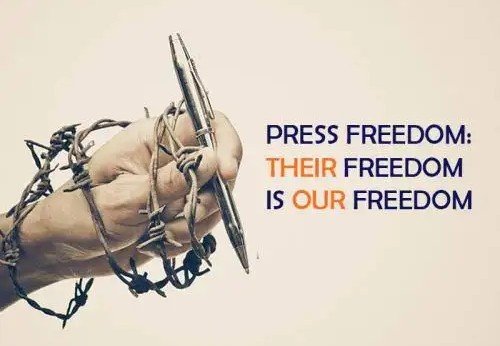The protests against farm laws that were hurriedly passed by the Indian government in September pose the most severe challenge to Prime Minister Narendra Modi’s authority since he first came to power in 2014. Farmers fear the laws, which the supreme court has now paused, will pave the way for the entry of large corporations into the agricultural market, weakening their ability to negotiate a fair price. Several rounds of talks between farm leaders and government ministers have failed to reach a resolution, so now the government is using the large and visible presence of Sikh farmers to suggest the protests are influenced by religious separatists. In the process it is also coming down hard on the few media organisations that still act independently.
At 4:09pm on 26 January, as more than 100,000 farmers on tractors poured into Delhi, the monthly magazine where I work, the Caravan, tweeted: “Navneet Singh, a 34-year-old farmer protester from Uttarakhand, was shot and killed at ITO [the Income Tax Office area of the city] this afternoon, acc to an eyewitness.” This was followed by more details: “Harmanjit Singh said he was walking alongside a tractor that Navneet was driving when the latter was shot.”
Our reporters had been on the scene for more than an hour and our web desk waited for video footage of the eyewitness before putting out the tweet. Another tweet clarified: “An eyewitness told The Caravan that he saw the police firing from behind the grills of the Andhra Education Society …” Our reporters on the spot saw that the police made no attempt to secure the crime scene, but strolled through the blood-stained area and refused to heed requests by the protesters to look into the incident. One of the policemen told our reporters that the other policemen had run away “out of fear”.
Over the next four days while we were preparing to run a story on the death of Navreet Singh (as his name turned out to be), the Delhi police didn’t answer several of our queries. Finally, on 30 January, a senior official at Delhi police responded, not to the queries but to our Twitter account, stating: “Due to misleading and false information by The Caravan that a farmer protester has died due to police firing, a case has been registered in IP Estate police station.”
This turned out to be one of up to 10 similar cases filed across the country in states where the local government is run by Modi’s Bharatiya Janata party (BJP). While the BJP does not run the state government in Delhi, the Delhi police answers to the central BJP government.
The cases invoked sections of the law that included “sedition”, a non-bailable offence with a sentence that can range from three years to a life term. Those booked from the Caravan include the executive editor, Vinod Jose, Anant Nath, editor and executive publisher, and Paresh Nath, owner and publisher of the group that runs the magazine.
Others booked include the politician Shashi Tharoor and a few other prominent journalists. The next day, a case was filed against Siddharth Vardarajan, editor of the digital website the Wire, for running a video story where Navreet Singh’s family alleged that he had been shot.
These cases in quick succession seem to be no coincidence, given the Caravan and the Wire are among the few media organisations willing to look at the ruling government critically, at a time when much of the mainstream media has effectively become a propaganda outlet for Modi’s government. The very next day, Mandeep Punia, a freelance reporter who contributes to the Caravan, was picked up by the Delhi police at Singhu, a major protest site on the outskirts of Delhi. And then the Caravan’s Twitter account was suspended on government orders. It was one of 250 handles that went down. They have since been restored.
Much of this has gone unchallenged because the institutions of constitutional democracy that are meant to function as a check on executive overreach have largely given way. Modi’s majority in both houses of parliament and an ineffectual political opposition mean there is little by the way of legislative restraint. The civil service and the police act more as political extensions of the government rather than constitutional functionaries.
In this climate, the government is invoking a tried and tested method to clamp down on protests. In 2018, violence broke out between Dalit and Hindu fundamentalist groups when the former gathered to commemorate a 200-year-old battle in which Dalits helped the British defeat an army led by high-caste Brahmins. Since then several academics and activists have been arrested for aiding what the police claim was a conspiracy by ultra-left groups, but the leaders of the Hindu fundamentalist mobs have escaped accountability.
A year ago, when protests by India’s large Muslim minority broke out against the government’s new citizenship laws, they were targeted by large rightwing mobs, abetted by the police. In the ensuing violence in Delhi, more than 50 people were killed, the majority of them Muslims. Since then a number of activists and student leaders have been rounded up and charged for being part of a conspiracy to instigate the violence. Again political leaders from the BJP have largely escaped legal consequences. It is no coincidence that Dalits, Muslims and the farmers, a huge number of whom are Sikhs, are among the groups that stand outside the government’s Hindu-nationalist project.
Much of India’s press has already been compromised, exhibiting complicity and subservience to the government. But these new legal actions have a clear aim: to silence or weaken what remains of the fourth estate. If honest reporting from the ground can be treated as “sedition” then there may soon be little serious journalism left in India.
(The Guardian)
